Why “Black” and why “Friday”?
Origins, facts, and background
Let’s first take a brief historical, linguistic, and etymological journey:
Where does this day actually come from, and how did it establish itself in the digital age?
Black Friday originated in the United States in the early 1950s. The event takes place on the Friday following Thanksgiving, which falls on the fourth Thursday in November.
Originally, Black Friday was a retail-focused sales event, centered around discounts offered in brick-and-mortar stores to attract shoppers and boost sales.
Since Thanksgiving always falls on a Thursday between November 22 and 28, Black Friday naturally occurs between November 23 and 29.
Traditionally, employees and families used the day after Thanksgiving as a bridge day — an opportunity to take time off, make the most of one-off discounts and special promotions, and get their holiday shopping done efficiently and at lower prices.
There are many myths and stories surrounding the origin of the name “Black Friday.”
From a continental European perspective, and according to some speculations, the term “Black Friday” is said to have originated because, due to time zone differences, it was already Friday in Europe while Thursday had not yet ended on the American continent.
In the early 1950s, the American press used the term “Black Friday” in print — literally “in black and white” — referring to the fact that the streets on the Friday after Thanksgiving were packed with crowds, making them appear “black.”
According to other sources, the term “Black Friday” was first documented in the 1960s in Philadelphia, USA. At that time, the Philadelphia police used the term to describe the day after Thanksgiving in connection with the massive shopping crowds that poured into the city to start their Christmas shopping.
These crowds brought chaos to the streets and downtown, causing traffic problems and necessitating an increased police presence. From the perspective of the overworked officers, this day truly became a “black Friday” — in the sense of a day marked by hardship and disorder.
On Black Friday, stores typically offered heavily discounted prices to attract customers into brick-and-mortar shops.
Another theory suggests that the term “Black Friday” may have originated from the fact that, on this day, stores often ended up “in the black” financially, or that shopkeepers’ hands were black from counting money.
This idea may have contributed to the day acquiring a positive connotation in the 1980s, generating a significant marketing effect. Retailers deliberately reframed the term, promoting the notion that Black Friday was the day when stores transitioned from “red” (losses) to “black” (profits).
This marketing strategy proved successful and helped establish Black Friday as a synonym for massive discounts and special offers.
When and how did Black Friday arrive in Europe/Germany?
Apple actually had a hand in bringing it over (who else, right? 😉)
In 2006, Apple was the first company to bring the American tradition to Europe, promoting deep discounts on the last Friday of November — albeit without using the term “Black Friday.”
The first major online Black Friday emerged when Amazon and other e-commerce platforms started leveraging the day for special deals and promotions.
Up until 2010, it was still referred to as a “one-day shopping event.” However, its popularity grew so rapidly that by the following year, 500 additional retailers had joined in.
With the increasing digitalization of retail, Black Friday gradually began to establish itself online as well. Consumers increasingly appreciated the ability to shop from home without having to navigate the crowds in physical stores.
In recent years, many retailers have significantly expanded their online offerings to keep up with this trend. Online sales on Black Friday have experienced explosive growth, making it a major event for both online stores and shoppers alike.
Over the years, Black Friday has become one of the most revenue-generating days of the year for retailers and has grown in popularity in many other countries, including Germany.
In Europe, and particularly in Germany, the term Black Friday has only been popular for about a decade.
Black Friday has been occurring in larger volumes in Germany since 2013 and has firmly established itself in the German market. By 2017/2018, it was no longer an unfamiliar term for the majority of Germans, and it even brought along its companion “Cyber Monday” as well as several other newcomers.
From a one-day shopping event to Black Month / Black November
Originally conceived as a “one-day shopping event,” Black Friday has over the years evolved into a shopping frenzy and is increasingly extended over several days.
These extensions not only bring about new neologisms and word creations but also give rise to new or expanded marketing strategies.
Nowadays, retail promotions no longer take place solely on Black Friday itself but are extended into a Black Weekend, through Cyber Monday, and even across an entire Black Week.
This gives end consumers the opportunity to snag deals over several days or even weeks.
✅ Black Week 2025 → November 24–30, 2025
✅ Black Friday 2025 → November 28, 2025
✅ Black Weekend 2025 → November 28–30, 2025
✅ Cyber Monday 2025 → December 1, 2025
As the extended calendar above shows, many retailers start their promotions early or extend them through Cyber Monday (December 1, 2025) to give their (online) sales a lucrative boost before or after Black Friday and to further enhance the shopping experience.
The Black Week was introduced to extend the shopping experience for consumers while also giving retailers the opportunity to boost sales over several days.
For retailers, Black Week is an important source of revenue and also a way to clear out older inventory.
Typically, Black Week starts on the Monday before Black Friday and ends on Sunday. This year, it begins on November 24, 2025.
Some promotions can even extend through Cyber Monday. In particular, companies in the technology sector hold Cyber Monday events, during which electronics items — such as Bluetooth headphones or speakers — are offered at discounted prices.
The combination of Black Friday and Cyber Monday has allowed retailers to create a continuous sales period that extends beyond the traditional weekend. Competition in e-commerce has driven many companies to refine their marketing strategies and optimize their websites to further encourage customers to make purchases.
In recent years, especially during and after the COVID-19 pandemic, online retail has grown significantly during Black Week and on Cyber Monday. Many consumers prefer to shop comfortably from home, as it allows them to avoid long queues and provides the time and opportunity to compare prices across numerous deals.
Nowadays, we even talk about a Black November or Black Month: Many companies now start offering attractive discounts and special promotions as early as the beginning of November, spread across the four weeks in varying intensities.
The goal is to stimulate consumer purchasing interest early and enhance the shopping experience throughout the entire month. By running specific campaigns and promotions over the course of November, retailers attract end consumers continuously, giving the event an increasingly pronounced “Black Month” character.
Black Week & Black November in Affiliate Marketing:
Black Week is one of the most important periods in affiliate marketing. During this time, online retailers can generate significant revenue in collaboration with affiliates and strengthen their market position in a lasting way.
Revenue Trends in Affiliate Marketing
In affiliate marketing, in particular, interesting trends and developments can be observed. A look at revenue growth over recent years shows that consumer behavior continues to evolve within a dynamic economic environment.
Shifts in Consumer Purchasing Behavior
2022: In the post-pandemic period, affiliate marketing experienced a significant surge in revenue during Black Week. After the restrictions of the pandemic, consumers increasingly sought out deals, leading to a rise in online shopping and higher sales.The focus was on quick and convenient purchasing decisions: many online retailers offered incentives such as exclusive discounts and special promotions for affiliates. Overall, affiliate marketing revenues grew by approximately 30% compared to the previous year, with particularly strong performance in the electronics, fashion, and home goods categories.
2023: Inflation in 2023 brought about shifts in consumer habits, as concerns about rising prices and changing economic conditions had a strong impact on purchasing behavior. Although affiliate marketing revenues remained robust, growth was moderate, increasing by approximately 15% compared to 2022. The trend toward online shopping continued, but consumers became more price-conscious and selective, increasingly comparing prices and actively seeking out the best deals and promotions.
2024: Following a period of economic uncertainty, consumer behavior stabilized. According to NielsenIQ, Black Week 2024 sales increased by 4.7% compared to the previous year. Tech consumer goods — such as air fryers, AR/VR headsets, headphones, and computers — were particularly in demand. Online retail grew by 4%, while brick-and-mortar stores recorded a 6% increase in sales.
2025: Industry experts expect moderate but stable growth in affiliate marketing for 2025, driven by the continued importance of digital sales channels and targeted discount strategies. The German Retail Federation (HDE) forecasts online retail growth of around 4% compared to 2024, corresponding to a sales volume of approximately €92.4 billion.
Within the affiliate sector, revenue growth in 2025 is expected to reach around 8–12% compared to 2024. While this growth is more moderate than during previous boom years, it still outpaces the overall e-commerce average.
Overall, the affiliate channel remains a key lever for retailers to boost sales during Black Week, albeit with a stronger focus on efficiency, targeted incentives, and data-driven management of partner programs.
Price Sensitivity & Shifts Across Categories
Discounts and promotions remain central motivators during Black Week. Consumers respond particularly to attractive price reductions, clearance items, or discounted stock.
According to a Shopify study, 77% of German consumers actively compare prices, and 61% deliberately wait for promotions such as Black Friday or Cyber Monday. This underscores the continued importance of discounts as a purchasing incentive.
At the same time, the focus is increasingly shifting toward essentials, such as food, health products, and everyday items, while luxury goods play a lesser role. Inflation and rising living costs are driving more conscious consumption, a trend that also influences the product selection via affiliate channels. In 2024, online pharmacies and health products grew by 18% compared to the previous year.
Publisher Segments 2024/2025: Key Success Factors for Black Week / Black November
As we can see, consumer behavior evolves every year, presenting new challenges and opportunities in affiliate marketing. In 2024, the trend toward cautious or deliberate consumption persisted: consumers were highly motivated during Black Week, yet remained price-conscious and selective.
In this demanding environment, the choice of the right publisher models determines the success of Black Week or the entire Black November. Retailers who strategically align their partner programs can significantly increase reach, conversions, and revenue — even with more cautious consumers.
Approaches That Promise Lucrative Results
Many consumers plan their purchases in advance, compare prices, and use wishlists to make targeted buys during Black Week.
Despite careful planning, spontaneity remains a key factor, especially when it comes to attractive flash deals.
Black Week is increasingly becoming a testing ground for innovative publisher concepts: performance-driven affiliates, content-focused niche publishers, and data-driven shopping platforms are gaining relevance. Successful brands leverage this diversity to precisely reach different target audiences and optimize the customer journey across all channels.
Looking ahead to 2025, this development is set to gain further momentum. Publisher models that offer flexibility, real-time optimization, and deeper integration of brand and performance objectives will become key drivers of growth and profitability. Companies that align their affiliate strategies early with these trends will secure a decisive advantage during the competitive Black Week period.
In this context, AI scouting combined with data intelligence comes into focus. AI-powered algorithms can analyze vast amounts of data in real time to identify new publisher opportunities, audience clusters, and purchasing patterns early on. While traditional data analysis provides retrospective insights into past campaigns, AI scouting offers a forward-looking perspective—detecting trends and assessing the likelihood of partnership success.
Brands that consistently leverage this synergy of data and AI not only gain transparency but also develop an adaptive system that autonomously identifies opportunities, including during the critical Black Week period.
Content Publishers, Blogs, and Comparison Platforms
Even traditional publishing houses and high-traffic online portals have long recognized the enormous potential of Black Week and strategically leverage this period for their campaigns. Content-driven publishers—ranging from blogs and comparison portals to specialized advice sites—play a key role in the consumer decision-making process. These models are particularly effective for high-priced or complex products.
They accompany consumers throughout the entire decision journey: from initial inspiration, through orientation, to the final purchase decision. Through editorial content such as in-depth guides, top lists, or detailed reviews, they build trust, provide value, and increase purchase intent. For products that require explanation or represent a significant investment, this content serves as a critical link between the brand and the end consumer.
For advertisers, content publishers offer the opportunity to position products in a credible, editorial environment—ensuring presence exactly when consumers are actively seeking guidance.
Price Comparison & CSS (Comparison Shopping Services)
The combination of price comparison platforms and Comparison Shopping Services (CSS) in affiliate marketing — especially during high-traffic shopping events like Black Week — offers numerous advantages, as these channels are particularly strong in the mid-funnel.
Price Comparison Platforms
Price comparison platforms attract buyers who are actively searching for the best deals. This high purchase intent typically results in better conversion rates.
During Black Week, when consumers are particularly price-sensitive, showcasing attractive discounts or best-price offers on these platforms can directly boost sales.
Price comparison platforms are a key component of mid-funnel e-commerce strategies. They specifically target users who already have strong purchase intent and act as a neutral authority, building trust. Especially during intensive discount periods like Black Week, their credibility is crucial: consumers value the ability to compare prices transparently and objectively, without being influenced by direct marketing messages.
Products on these platforms are often compared not only by price, but also by ratings, shipping conditions, and additional services. This gives companies the chance to highlight their strengths and create purchase incentives. Maintaining a well-structured product feed with up-to-date prices, availability, and promotions is essential. Platforms that clearly communicate discounts and special offers generate immediate purchase impulses, which translate directly into higher conversion rates.
Furthermore, retailers benefit from targeting highly purchase-ready users: someone searching for a specific product on a comparison platform has often already made most of their buying decision. Strategically executed price comparison campaigns help capture these users before they turn to competitors, increasing the likelihood that the visitor becomes a customer.
CSS (Comparison Shopping Services)
During Black Week, competition is particularly intense, and CSS campaigns can help retailers stand out from the crowd.
Affiliates with a CSS focus can contribute to expanding reach by launching campaigns specifically tailored to Black Week.
CSS campaigns allow online shops to increase visibility in Google Shopping results, placing products prominently while simultaneously reducing click costs. By partnering with a CSS provider, retailers can optimize CPCs, freeing up budget for additional marketing activities such as content creation, retargeting, or supplementary campaigns.
Especially in the battle for purchase-ready consumers, CSS campaigns are a powerful tool for capturing mid-funnel potential. They not only offer cost advantages but also the ability to expand reach in a highly competitive environment. Retailers who strategically manage their CSS campaigns benefit from continuous performance optimization and can directly leverage the insights gained for other marketing initiatives.
Programmatic Advertising und Retargeting
Automated advertising models and intelligent retargeting strategies are among the most effective levers during Black Week. They enable brands to re-engage users who have already shown interest in specific products or categories, guiding them back into the purchase process at the critical moment.
Particularly effective are dynamic ad formats that automatically adapt to user behavior. Whether it’s time-limited offers, personalized discounts, or reminders for items left in the shopping cart, tailored messages significantly increase the likelihood of conversion. At the same time, programmatic advertising ensures that these messages are delivered in real time and at scale to the most relevant target audiences.
For advertisers, this combination offers a dual advantage: maximum efficiency through precise targeting and a significantly higher conversion rate during an already highly competitive sales period.
Cashback & Loyalty Platforms
Cashback and loyalty portals are among the strongest performance drivers during Black Week. Positioned at the end of the customer journey, they make a significant contribution to final conversions. Users who already have purchase intent are motivated to complete transactions through additional financial incentives or exclusive bonus opportunities.
These models are particularly popular among price-conscious shoppers. Attractive cashback rates or extra points within loyalty programs provide immediate value and significantly increase the likelihood of purchase. At the same time, advertisers can strategically direct traffic to high-margin products or key categories through targeted incentives, further enhancing the economic success of Black Week campaigns.
This approach is also especially valuable for advertisers who cannot compete with high discounts: cashback or points programs still create an attractive effective price for price-sensitive consumers.
Coupon, Discount & Deal Sites
Coupon, discount, and deal sites are an indispensable part of the marketing mix during Black Week. During this period, consumers are especially actively searching for bargains and attractive offers, which is precisely where these platforms come into play. They curate the best deals and provide users with direct value by facilitating access to exclusive or time-limited discounts.
Most users on these sites are typically already exhibiting clear purchase intent. As a result, these models tend to achieve an above-average conversion rate. Advertisers benefit from efficient reach among a purchase-ready audience, waiting only for the final trigger to complete the transaction. Additionally, coupons and exclusive deals can be strategically used to boost sales in highly competitive product categories or to efficiently move remaining inventory.
These platforms are particularly advantageous for advertisers who cannot offer steep discounts: even smaller, exclusive coupons or limited-time promotions are enough to activate price-conscious consumers and generate strong conversion effects.
An equally compelling effect is the impulse purchase factor. Many users visit deal portals without a fixed buying goal, and are inspired by attractive offers. A strong deal can create a need that didn’t exist before, resulting in an unplanned purchase. This opens an additional sales channel for advertisers beyond traditional demand.
In highly competitive markets, where price and attention are critical, exclusive or limited deals can capture existing purchase intent and also generate new buying decisions that would not have occurred otherwise.
This dual effect makes coupon and deal sites particularly powerful: they secure existing revenue by supporting the final conversion step, while simultaneously expanding the market by activating new customer segments. Even small, exclusive discounts or time-limited promotions are sufficient to engage both price-sensitive and spontaneous buyers.
Live Shopping Events & Interactive Experiences
Live shopping events and interactive online experiences are emerging as one of the most exciting trends around Black Week. They enhance the shopping experience while creating genuine closeness between brands and consumers. They are particularly effective at reaching younger audiences, who are heavily influenced by social media and influencers.
The combination of social media reach, influencer marketing, and real-time interaction makes live shopping a powerful tool to capture attention and trigger purchase impulses at the moment of inspiration. Exclusive offers, limited products, or special Black Week deals can be presented live and emotionally, further boosting purchase intent.
Practically, retailers can use live shopping to efficiently clear remaining stock, launch limited editions exclusively for Black Week, or showcase products in highly engaging ways. This not only drives short-term sales, but also fosters long-term brand loyalty within a digitally savvy community.
Black Week Publishers – Specialists for the Peak Sales Season
Black Week publishers are specialized in the highest-revenue shopping period of the year, focusing their activities around Black Week and Cyber Monday. They are characterized by extremely high reach, strong traffic spikes, and a clear focus on short-term conversion growth. Many of these publishers operate their own Black Week portals or deal sites, dedicated exclusively to heavily discounted products, serving as central hubs for bargain hunters during this period.
These portals aggregate offers from multiple retailers and present them in a clear, organized manner, allowing users to quickly find relevant deals. The focus is firmly on attractive, time-limited promotions that feature substantial price reductions, driving high conversion rates.
Their success is primarily based on precise timing, countdown deals, and high visibility. These publishers are particularly relevant for brands aiming to generate large volumes in a very short period. Due to their specialization, they can effectively channel the enormous demand during Black Week, providing an efficient way to achieve broad reach quickly.
Exclusive deals, available only for a limited time and clearly distinguished from regular offers, are especially successful—a crucial factor for standing out amidst the flood of discounts.
Technological Developments
The use of mobile devices continues to rise, significantly enhancing the effectiveness of affiliate marketing campaigns during Black Week. Mobile optimization is no longer a “nice-to-have”—it has become a critical requirement for achieving high conversion rates. Fast-loading, clear landing pages and mobile-friendly checkout processes are now essential to ensure that users can complete purchases seamlessly on the go.
Additionally, platforms like Instagram, TikTok, and other social media channels are becoming increasingly important for targeting younger audiences. Short, attention-grabbing content, interactive features, and influencer integration create additional purchase triggers and connect content, entertainment, and commerce in innovative ways.
Technological developments and mobile usage thus become an integral part of successful Black Week strategies.
This is particularly advantageous for advertisers with limited marketing budgets: by optimizing the mobile user journey, they can significantly increase conversion efficiency and revenue without heavy media investment.
Affiliate Marketing is a Key Component of a Successful Black Week Strategy
Affiliate marketing plays a crucial role in any successful Black Week strategy. Affiliates promote products strategically, drive traffic to online stores, and often operate on a commission-based or flexible hybrid model. This creates a performance-driven marketing approach for advertisers, combining both efficiency and scalability.
To unlock the full potential of affiliate campaigns, careful and early planning is essential. This includes selecting the right partners, aligning campaign objectives, and integrating attractive incentives. Only by doing so can advertisers maximize revenue and conversions, sustainably increase customer engagement, and build long-term partnerships with high-performing affiliates.
Operational Management for a Successful Black Week 2025 in Affiliate Marketing
Black Week 2025 presents a tremendous opportunity for affiliates and advertisers to significantly boost their revenue. Success depends not only on strategic alignment but also on effective operational management—from careful planning to seamless execution.
Long-Term vs. Short-Term Planning: Opportunities and Challenges from an Affiliate Marketing Manager’s Perspective
Planning for Black Week in affiliate marketing is essential to achieve optimal results. The key question is: Should planning be long-term or short-term?
Both approaches have their advantages and disadvantages, depending on factors such as company size, additional budget availability, margins, advertiser capacities, and willingness for long-term campaign planning. With the skilled hand of an affiliate specialist, much can be coordinated operationally and the planning process brought to a logical conclusion.
Here are some tips to consider when planning Black Week in affiliate marketing:
Long-Term Planning: Advantages
1. Strategic Preparation:
-
- Early planning and open, transparent communication among all stakeholders — advertisers, affiliates, and networks — enable the development of a comprehensive strategy. This includes selecting the right products, discounts, and marketing campaigns, as well as allocating media budgets for the affiliate channel. Additionally, the selection of affiliates and partners that align with the target audience should be clarified well in advance.
Close collaboration between the affiliate specialist or agency and the advertiser is essential to develop a long-term action plan with relevant partners and to approach Black Week with sufficient lead time.
Early planning lays the foundation for a well-thought-out and effective strategy. It allows all relevant elements to be carefully defined — from product selection and attractive discount structures to media budget allocation. Equally important is the targeted design of marketing campaigns that optimally support both the overall online shop and the specific affiliate channel.
Transparent communication among all stakeholders — advertisers, affiliates, and networks — is the basis for successful campaigns. For the advertiser, this includes selecting products, defining discount models, setting budgets for different online marketing channels, and creating compelling campaign content.
At the same time, the selection of suitable affiliates and partners is critical: they should align with the advertiser’s target audience and actively contribute to achieving the campaign goals.
A close, joint strategy planning process between the affiliate specialist or agency and the advertiser is indispensable. This ensures that a long-term action plan is developed, involving all relevant partners and providing adequate lead time for execution. Such communication guarantees that objectives, budgets, and campaign content are clearly aligned, enabling smooth and effective implementation.
2. Budget Planning and Resource Allocation (Forecasting and Calculation):
-
- With sufficient lead time, budgets and resources can be allocated efficiently. Time buffers provide flexibility for unforeseen challenges and allow for optimized resource utilization. For large-scale campaigns, it is particularly important to discuss budget levels, advertising subsidies, or additional CPO increases in advance. Bonus payments and tiered models for affiliates should also be determined early and communicated to partners.
When online shops have planned additional budgets or are preparing large-scale campaigns, it is essential for affiliate marketing specialists to start Black Week planning early. It is important to consider that the advertiser usually operates multiple online marketing channels alongside the affiliate program. Therefore, budget allocations, advertising subsidies, and potential additional campaigns for the affiliate channel should ideally be agreed upon at least three months in advance.
In this context, hybrid models, potential CPO increases, performance-based bonuses, and tiered affiliate programs can be incorporated strategically into the plan. These agreements must then be communicated to affiliates in a timely manner.
Based on the defined objectives and available budget or commission structures, affiliate and partner offers are requested, carefully reviewed, and compared. As early as the beginning of Q4, targeted CPO increases can be used to “warm up” campaigns or traffic initiatives, ensuring that the maximum potential of the peak season is achieved.
In most cases, it is advisable to create a structured media and budget plan, which the advertiser can access and actively participate in—for example, by reviewing, approving, or rejecting potential offers.
The media plan should include all relevant details, such as placements, placement examples, costs, deadlines, advertiser-provided information and creative assets, as well as documentation of publisher IOs and invoices.
To maintain a comprehensive overview and ensure that all steps run smoothly during the hectic Black Week, at ARTEFACT we create dedicated Excel master lists where all information, details, and documents are recorded and regularly updated. Alternatively, or additionally, project management systems with task allocation and ticketing can be used.
However, the affiliate specialist always depends on the advertiser’s cooperation. Even the best-negotiated placements are useless if promotion and campaign details are not shared with publishers in time, as publishers need this information to block the most effective days or periods for their push based on competition. The same applies to the timely provision of creative assets, especially for large display or content-commerce campaigns in leading media outlets.
3. Increased predictability:
A successful Black Week in affiliate marketing begins long before the actual campaign launch. Early communication with affiliates and strategic negotiation of placements or special conditions are crucial.
By starting planning early, advertisers can conduct price negotiations strategically, apply CPO models or bonus payments effectively, and create tailored placements for the online shop or specific products.
Additionally, early bookings often provide cost advantages (e.g., annual planning bundle prices), such as by combining Black Week placements with other campaign bookings throughout the year. This approach allows for optimal alignment of budget and annual planning, and ensures that all final agreements with partners are prepared smoothly and stress-free.
- Data Analysis and KPI Measurement of Affiliates & Offers:
- With sufficient lead time, historical campaign data can be leveraged to identify the best-performing partners and secure the most effective placements. Early testing of models and strategies is also possible, allowing for data-driven optimization before the peak period begins.
Affiliate Marketing thrives on partnerships—and on numbers. With early planning, affiliate specialists have ample time to communicate with affiliates.
It is crucial to identify the right partners for Black Week and negotiate relevant offers well in advance. Care should be taken to ensure that both the partners and their offers align with the advertiser’s target audience.
Numbers, Numbers, Numbers — not just “paying”!
At ARTEFACT, we rely on Black Week data from the past two to three years. By comparing performance year over year, we derive valuable learnings and develop strategies and new campaigns for the current year—both for further optimization and testing purposes.
We consistently ask ourselves key questions:
- Which publisher segments reliably perform during Black Week?
- Which similar campaigns are worth repeating?
- Where can we test new publisher models, depending on the advertiser’s budget and willingness to experiment?
- Which partners from previous years should be reactivated?
- What market changes need to be considered?
- What challenges does the advertiser face—e.g., clearing stock, increasing cart size, or expanding the product portfolio?
Using specific quantitative KPIs, we prioritize the top partners from the existing database based on:
- Reach and visibility
- Revenue generation during the Black Week campaign
- Positive KUR, eCPO, eCPC, ROI, conversion rate, etc.
- Click-through rates that meet established industry standards for display campaigns
From such analyses, it becomes quickly apparent whether the planned campaigns are likely to align with past performance, allowing us to determine what to optimize this year or explore new placement opportunities with the relevant partners.
This is where the power of data and AI comes into play: they enable companies to not only react to Black Week but proactively shape opportunities. Data provides an objective basis for decision-making, showing which segments, channels, and offers have historically performed reliably. AI complements this by identifying complex patterns and correlations that human analysis may miss, generating actionable predictions for campaign management, budget allocation, and offer optimization. Together, they create a continuously learning system: data provides transparency, and AI translates it into actionable recommendations that can be implemented directly. Brands that leverage this synergy gain the ability to respond flexibly to market movements, scale testing efficiently, and increase performance during Black Week in a measurable and predictable way.
In addition to measurable quantitative KPIs, we place strong emphasis on qualitative KPIs, such as affiliate responsiveness, reaction times, and overall collaboration experience. This allows us to realistically assess early on whether the planned campaigns are likely to perform and identify areas for optimization.
Since affiliate marketing is dynamic and new models continuously emerge, we are always on the lookout for up-and-coming trends. In consultation with our advertisers, we test and integrate innovative models to stay ahead of the curve.
An important part of this approach is also looking outward: we attend events such as Awin Black Week Meets, Golden Quarter Meets, or other webinars like the TD Experts Webinar – Black Friday. These events provide an opportunity to capture the latest trends firsthand — through elevator pitches or direct exchanges with partners and industry experts — and incorporate them into campaign planning according to the advertiser’s specific requirements.
4, Flexibility in Campaign Design & Development:
-
- Early planning not only enables better placements but also provides more room for creative ideas. Sufficient lead time allows for the targeted optimization of landing pages, product feeds, and creative assets specifically for Black Week. After all, only campaigns that stand out leave a lasting impression on consumers.
To stand out as an online shop during Black Week, it is crucial to develop creative and engaging campaigns. This also includes the design of promotional materials and landing pages that are specifically tailored to Black Week.
To add value on our side, we consult with publishers and leverage their experience-based insights, gathering tips and tricks to remain competitive in the market:
- Which creatives perform best?
- Which formats resonate most with users?
Based on these insights, we develop campaigns that are not only visually appealing but also sales-driven. Therefore, it is important to inform the advertiser early about the required creative formats and to adjust the product data feed, which plays a key role for CSS, price comparison, and product comparison partners—especially during discount promotions.
Custom landing pages for affiliates and individual discount codes further enhance the attractiveness of the campaigns and motivate affiliates/partners to actively promote the offers.
- Conversion Optimization:
Ultimately, the conversion rate decides the success of Black Week. Advertisers should therefore start refining the user experience months in advance, not just in November. This includes fast loading times, clear offer presentations, and an intuitive customer journey for the end user to stay competitive.
When online shops, for example, use strikethrough prices, these must be displayed consistently and clearly so that they immediately trigger the savings and discount perception for the end user – and, crucially, prevent them from bouncing. A bounce can happen quickly if users don’t instantly understand what they’re actually saving due to unclear price displays.
In short: anyone aiming to master Black Week successfully needs early planning, a solid data foundation, flexible campaign ideas, and a sharp focus on conversion optimization. This is how campaigns emerge that are not only visible, but also deliver sustainable results.
Long-term Planning: Disadvantages
In addition to the many advantages of early and/or long-term planning, it can also entail certain downsides.
The following aspects should be taken into account:
- Market Changes:
- Planning too early carries the risk that markets and strategies may no longer be up to date by the time they are executed.
Markets and trends shift rapidly. Early planning can result in offers and strategies becoming outdated before implementation or losing competitiveness.
This often leads to short-term changes in offers and plans, as well as the need for new, faster communication channels, since advertisers may have to adjust campaigns, prices, and/or products at very short notice.
- Lack of Flexibility:
- Long-term plans can be inflexible, especially when short-term market conditions, as mentioned above, change.
In addition to the risk of shifting circumstances, an overly rigid plan can limit adaptability, particularly when customer needs, stock levels, or market conditions fluctuate on short notice.
- High Resource / Planning Effort:
- Intensive preparation can be challenging for smaller companies, as planning requires significant time and resources.
Comprehensive preparation demands both effort and capacity, which may not be ideal for smaller businesses. Therefore, the “scope of planning” should be outlined in advance according to the company’s size, carefully considering what level of planning volume makes the most sense for each advertiser.
Short-term Planning from an Affiliate Marketing Specialist’s Perspective
- But what happens when Black Week planning takes place at short notice?
- When online shops decide to set up offers for the affiliate channel spontaneously, because they’ve just realized the added value this channel can provide?
- When long-term planning wasn’t possible due to a lack of resources, which only become available at a later stage?
- Or when planning is still in its early stages and requires a certain level of experience?
There are always different scenarios or spontaneous circumstances that require a quick response.
Below are some of the advantages and disadvantages that come with a short-term approach:
Short-term Planning: Advantages
1. Flexibility and Quick Adaptation:
-
- Short-term planning generally allows for rapid responses to current trends and changes. For example, if competitors launch promotions earlier, one can react quickly and counteract them.
If, as a result of a last-minute change in the advertiser’s campaign, a specific product or theme unexpectedly gains popularity, this can become an advantage: affiliate partners such as bloggers or content sites, as well as deal and discount platforms often prefer short-term deals, as they can react flexibly to traffic peaks.
Last-minute promotions, combined with a quickly released budget and/or additional CPO increases, can motivate affiliates to promote more intensively.
Publisher models, such as price comparison sites or CSS, push campaigns through CPO or CPO increases and will deliver solid results during Black Week even without additional incentives, provided the discount offers are attractive.
2. Cost Efficiency:
-
- Short-term planning requires less lead time, which in turn saves resources. Decisions can be made quickly and with focus.
With targeted short-term planning, attention is concentrated on what truly matters provided one keeps a clear head. This saves time and often reduces costs for unnecessary preparations.
However, this approach is often difficult to implement for larger advertisers, where decisions and approvals must pass through multiple levels. Therefore, it is important to consider which measures are appropriate for which type of client under the given circumstances.
3. Fast implementation:
-
- Campaigns can be launched immediately, which in some cases leads to faster results.
Affiliate specialists can, for example, respond quickly to last-minute budget changes and invest these resources directly into the most promising campaigns, rather than spreading a fixed budget rigidly over several months.
Short-term Planning: Disadvantages
1. Insufficient Preparation:
-
- Alongside the advantages of short-term planning and execution, there is, of course, the risk of overlooking important aspects, such as selecting the right affiliates or running effective ads.
If clear goals are not defined within the limited time, rapid action can cause planning to get out of control.
Collaboration with partners relies on clear agreements and individualized deals. With short-term planning, there is often no time to negotiate exclusive deals or better conditions.
Many affiliates plan their campaigns weeks or even months in advance. Under short-term planning, key partners might not be activated in time, potentially resulting in lost revenue.
2. Competitive Disadvantage:
-
- Those who plan too late may be overtaken by competitors who have already launched their campaigns earlier.
Reach can always be increased through early announcement of offers. Proper targeting on the relevant channels can build interest and customer loyalty even before Black Week begins.
3. Stress and Overload:
-
- Short-term planning can place stress on both the team and affiliates, potentially affecting the quality and efficiency of campaigns.
Short-term planning comes with high pressure and a hectic pace. This can impact not only the efficiency of the affiliate team but also the overall quality of the campaigns.
In the last two weeks before Black Week, things can become very tight. If preparation is not completed on time, close coordination and rapid decision-making are necessary to remain successful. A well-prepared network of affiliates is therefore essential. Regular updates and transparent information help ensure that all parties stay aligned, even when last-minute changes occur.
4. Impairment of communication:
-
- A short lead time complicates communication with affiliates, which can lead to misunderstandings and reduced performance.
Communication between the different parties (advertisers, affiliate managers, publishers, networks) can suffer due to last-minute or hectic planning, making it harder to ensure that all actors are well-informed and working from the same page. Regular exchange helps prevent delays or misunderstandings and provides affiliates and partners with the necessary clarity.
Nevertheless, with a clear head, it is possible to leverage the advantages of short-term planning and maximize the potential of Black Week campaigns.
For this reason, it is recommended to develop backup strategies for both short- and long-term planning:
If a short-term offer or plan does not perform as expected, an alternative campaign should be ready to launch immediately.
There are often leftover placements and Plan B options available from networks and publishers. Through a well-coordinated dialogue, it is sometimes possible to secure last-minute placements with exclusive offers or deals for the relevant affiliate: a corresponding CPO increase combined with a small fixed budget can serve as surrogate triggers, creating a win-win situation for all parties.
Even in cases where prominent placements are no longer available at short notice, affiliate specialists should not give up: with most partners, it is still possible to integrate promotions in a “normal” way through CPO increases. This approach allows one to benefit from already optimized and warmed-up traffic during the peak period, even if the campaign is not prominently advertised.
Therefore, it is advisable to inform affiliates via newsletters through networks, emails to top publishers about current or ongoing shop promotions, and to provide deeplinks, graphical and dynamic creatives, voucher creatives, updated product feeds, and promotion information in the networks’ backends. This ensures that affiliates are supplied with the right information and materials.
Conclusion:
Black Friday — originally a one-day shopping event in brick-and-mortar retail — has evolved through online commerce and increasing digitalization into a global phenomenon and a full Black Month.
Black Week 2025 is a win-win situation for advertisers, affiliates, and end users alike. Consumers can benefit from attractive offers, while retailers and online shops have the opportunity to significantly increase their revenues. Good planning and close collaboration with affiliate partners are key to a successful Black Week or Black November.
Consumer purchasing behavior in November 2025 will continue to be a mix of planning and spontaneity, requiring targeted engagement. Successful affiliate strategies rely on a smart combination of deal and voucher sites, content publishers, influencers, cashback models, and live shopping.
The choice between long-term and short-term planning depends on several factors, such as company size, market niche, and specific affiliate marketing goals.
Whether planning for Black Friday, Black Week, or the full Black November, the right strategy and rapid responsiveness are crucial.
Long-term planning offers many advantages, particularly regarding budget management, data analysis, and creative campaign design. It allows for comprehensive preparation but also comes with high resource demands and the risk of market changes.
While long-term planning provides room for thorough preparation, short-term planning allows for rapid adaptation to changes in the market and among competitors. Short-term planning is more flexible and cost-efficient but can lead to insufficient preparation, stress, and miscommunication.
For affiliate marketing specialists, a balanced approach is essential: standardized processes, clear communication, and data-driven decisions help leverage the benefits while minimizing the drawbacks. With a well-thought-out Plan (B) and the right strategy, short-term planning can also succeed and generate high revenues.
A hybrid strategy could offer the best solution, combining the advantages of both approaches by uniting thorough preparation with the flexibility of short-term planning.
Sources:
https://www.awin.com/de/advertiser/q4-opportunities
https://www.awin.com/de/events/dach-marketingkalender
https://www.backmarket.de/de-de/c/black-friday/what-does-black-friday-mean
https://www.blackfriday.de/was-ist-der-black-friday
https://www.blackfridaysale.de/page/wann-ist-black-friday.html
https://praxistipps.chip.de/woher-kommt-der-name-black-friday-alle-infos_96910
https://curved.de/tipps/woher-kommt-black-friday-die-geschichte-des-schnaeppchen-tags-667354

 BLOG
BLOG






